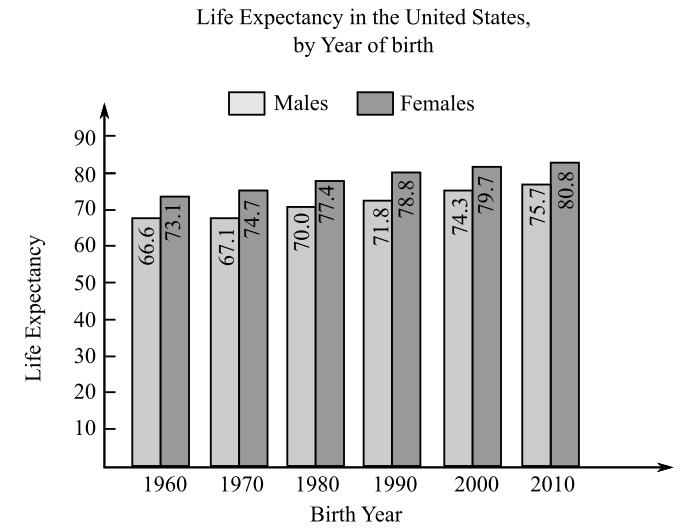Problem 1CVC: Fill in each blank so that the resulting statement is true. Data presented in a visual form as a set... Problem 2CVC: Fill in each blank so that the resulting statement is true. The slope, m, of a line through the... Problem 3CVC Problem 4CVC Problem 5CVC Problem 6CVC Problem 7CVC: Fill in each blank so that the resulting statement is true. The point-slope form of the equation of... Problem 8CVC Problem 9CVC Problem 10CVC Problem 11CVC Problem 12CVC Problem 1PE: In Exercises 110, find the slope of the line passing through each pair of points or state that the... Problem 2PE: In Exercises 110, find the slope of the line passing through each pair of points or state that the... Problem 3PE: In Exercises 1-10, find the slope of the line passing through each [air of points or state the slope... Problem 4PE: In Exercises 1-10, find the slope of the line passing through each pair of points or state that the... Problem 5PE: In Exercises 1-10, find the slope of the line passing through each [air of points or state the slope... Problem 6PE: In Exercises 1-10, find the slope of the line passing through each pair of points or state that... Problem 7PE: In Exercises 1-10, find the slope of the line passing through each pair of points or state that the... Problem 8PE: In Exercises 1-10, find the slope of the line passing through each pair of points or state the slope... Problem 9PE: In Exercises 1-10, find the slope of the line passing through each pair of points or state the slope... Problem 10PE: In Exercises 1 find the slope of the line passing through each pair of points or state that the... Problem 11PE: In Exercises #x2013;38, use the given conditions to write an equation for each line in point-slope... Problem 12PE: In Exercises 1138, use the given conditions to write an equation for each line in point-slope form... Problem 13PE: In Exercises 112, 5) Problem 14PE: In Exercises 1138, use the given conditions to write an equation for each line in point-slope form... Problem 15PE: In Exercises 1138, use the given conditions to write an equation for each line in point-slope form... Problem 16PE: In Exercises 1138, use the given conditions to write an equation for each line in point-slope form... Problem 17PE: In Exercises 1138, use the given conditions to write an equation for each line in point-slope form... Problem 18PE: In Exercises 1138, use the given conditions to write an equation for each line in point-slope form... Problem 19PE: In Exercises 1138, use the given conditions to write an equation for each line in point-slope form... Problem 20PE: In Exercises 1138, use the given conditions to write an equation for each line in point-slope form... Problem 21PE: Slope = passing through the origin Problem 22PE: In Exercises 1138, use the given conditions to write an equation for each line in point-slope form... Problem 23PE: In Exercises 1138, use the given conditions to write an equation for each line in point-slope form... Problem 24PE: In Exercises 1138, use the given conditions to write an equation for each line in point-slope form... Problem 25PE: In Exercises 1138, use the given conditions to write an equation for each line in point-slope form... Problem 26PE: In Exercises 1138, use the given conditions to write an equation for each line in point-slope form... Problem 27PE: In Exercises 1138, use the given conditions to write an equation for each line in point-slope form... Problem 28PE: In Exercises 1138, use the given conditions to write an equation for each line in point-slope form... Problem 29PE: In Exercises 1138, use the given conditions to write an equation for each line in point-slope form... Problem 30PE: In Exercises 1138, use the given conditions to write an equation for each line in point-slope form... Problem 31PE: In Exercises 1138, use the given conditions to write an equation for each line in point-slope form... Problem 32PE: In Exercises 1138, use the given conditions to write an equation for each line in point-slope form... Problem 33PE: In Exercises 1138, use the given conditions to write an equation for each line in point-slope form... Problem 34PE: In Exercises 1138, use the given conditions to write an equation for each line in point-slope form... Problem 35PE: In Exercises 1138, use the given conditions to write an equation for each line in point-slope form... Problem 36PE: In Exercises 1138, use the given conditions to write an equation for each line in point-slope form... Problem 37PE: In Exercises 1138, use the given conditions to write an equation for each line in point-slope form... Problem 38PE: In Exercises 11 use the given conditions to write an equation for each line in point-slope form and... Problem 39PE: In Exercises #x2013;48, give the slope and y-intercept of each line whose equation is given. Then... Problem 40PE: In Exercises 39-48, give the slope and y-intercept of each line whose equation is given. Then graph... Problem 41PE: In Exercises 39-48, give the slope and y-intercept of each line whose equation is given. Then graph... Problem 42PE: In Exercises 39-48, give the slope and y-intercept of each line whose equation is given. Then graph... Problem 43PE: In Exercises 39-48, give the slope and y-intercept of each line whose equation is given. Then graph... Problem 44PE: In Exercises 39-48, give the slope and y-intercept of each line whose equation is given. Then graph... Problem 45PE: In Exercises 39-48, give the slope and y-intercept of each line whose equation is given. Then graph... Problem 46PE: In Exercises 39-48, give the slope and y-intercept of each line whose equation is given. Then graph... Problem 47PE: In Exercises 39-48, give the slope and y-intercept of each line whose equation is given. Then graph... Problem 48PE: In Exercises 39-48, give the slope and y-intercept of each line whose equation is given. Then graph... Problem 49PE: In Exercises 58, graph each equation in a rectangular coordinate system. y = -2 Problem 50PE: In Exercises 49-58, graph each equation in a rectangular coordinate system. y= 4 Problem 51PE: In Exercises 49-58, graph each equation in a rectangular coordinate system. x = -3 Problem 52PE: In Exercises 49-58, graph each equation in a rectangular coordinate system. x = 5 Problem 53PE: In Exercises 49-58, graph each equation in a rectangular coordinate system. y = 0 Problem 54PE: In Exercises 49-58, graph each equation in a rectangular coordinate system. x=0 Problem 55PE: In Exercises 49-58, graph each equation in a rectangular coordinate system. f(x) =1 Problem 56PE: In Exercises 49-58, graph each equation in a rectangular coordinate system. f(x) = 3 Problem 57PE: In Exercises 49-58, graph each equation in a rectangular coordinate system. 3x 18 = 0 Problem 58PE: In Exercises 49- graph each equation in a rectangular coordinate system. 3x + 12 = 0 Problem 59PE: In Exercises 66, a. Rewrite the given equation in slope-intercept form. b. Give the slope and... Problem 60PE: In Exercises 59-66, Rewrite the given equation in slope-intercept form. Give the slope and... Problem 61PE: In Exercises 59-66, Rewrite the given equation in slope-intercept form. Give the slope and... Problem 62PE Problem 63PE: In Exercises 59-66, Rewrite the given equation in slope-intercept form. Give the slope and... Problem 64PE Problem 65PE Problem 66PE Problem 67PE Problem 68PE Problem 69PE Problem 70PE Problem 71PE Problem 72PE Problem 73PE: In Exercises 76, find the slope of the line passing through each pair of points or state that the... Problem 74PE Problem 75PE Problem 76PE Problem 77PE Problem 78PE Problem 79PE Problem 80PE Problem 81PE Problem 82PE Problem 83PE Problem 84PE Problem 85PE Problem 86PE Problem 87PE Problem 88PE: Application Exercises Americans are gettingmarried later in life or not getting married at all. In... Problem 89PE Problem 90PE Problem 91PE Problem 92PE: Just as money doesn't by happiness for individuals, the two don't necessarily go together for... Problem 93PE Problem 94PE Problem 95PE Problem 96PE: Explain how to graph the equation x = 2. Can this equation be expressed in slope-intercept form?... Problem 97PE Problem 98PE: Explain how to use intercepts to graph the general form of a lines equation. Problem 99PE Problem 100PE Problem 101PE Problem 102PE Problem 103PE Problem 104PE Problem 105PE Problem 106PE Problem 107PE Problem 108PE Problem 109PE Problem 110PE: In Exercises 109112, determine whether each statement is true or false. If the statement is false,... Problem 111PE Problem 112PE Problem 113PE Problem 114PE Problem 115PE Problem 116PE Problem 117PE Problem 118PE Problem 119PE Problem 120PE: Exercises 121will help you prepare for the material covered in the next section. If f(x)x2, find... format_list_bulleted



 Big Ideas Math A Bridge To Success Algebra 1: Stu...AlgebraISBN:9781680331141Author:HOUGHTON MIFFLIN HARCOURTPublisher:Houghton Mifflin HarcourtAlgebra & Trigonometry with Analytic GeometryAlgebraISBN:9781133382119Author:SwokowskiPublisher:Cengage
Big Ideas Math A Bridge To Success Algebra 1: Stu...AlgebraISBN:9781680331141Author:HOUGHTON MIFFLIN HARCOURTPublisher:Houghton Mifflin HarcourtAlgebra & Trigonometry with Analytic GeometryAlgebraISBN:9781133382119Author:SwokowskiPublisher:Cengage Mathematics For Machine TechnologyAdvanced MathISBN:9781337798310Author:Peterson, John.Publisher:Cengage Learning,
Mathematics For Machine TechnologyAdvanced MathISBN:9781337798310Author:Peterson, John.Publisher:Cengage Learning,

